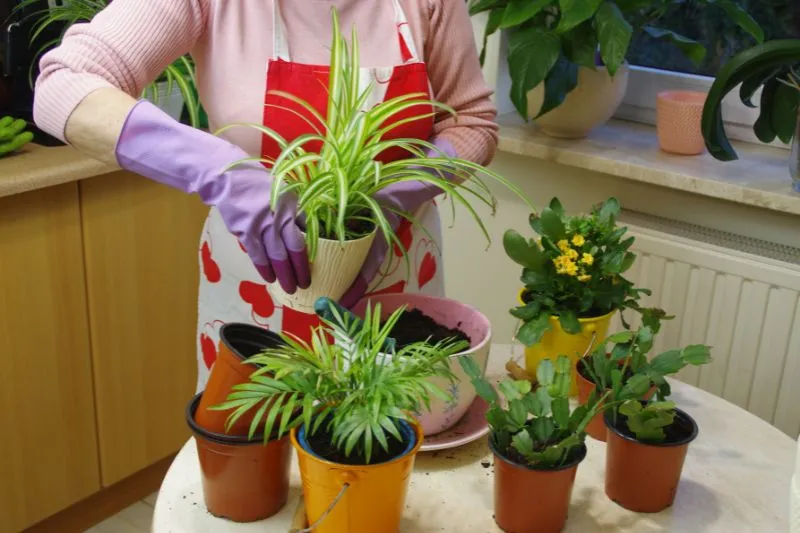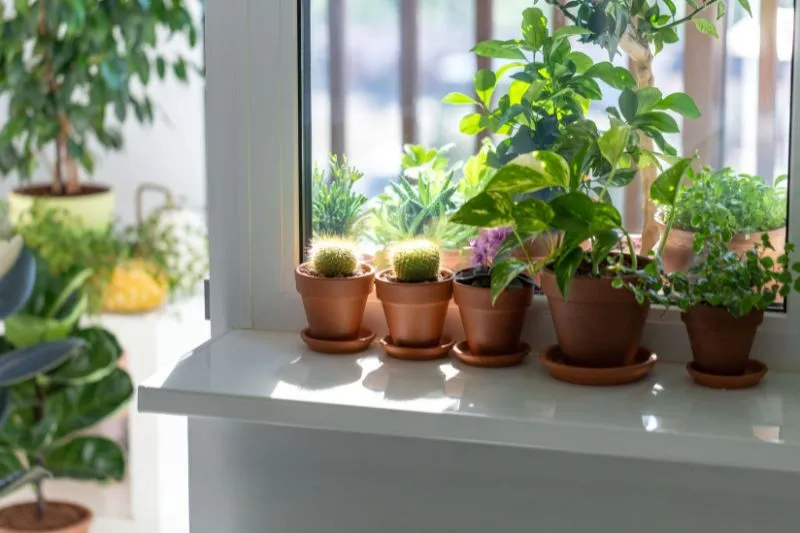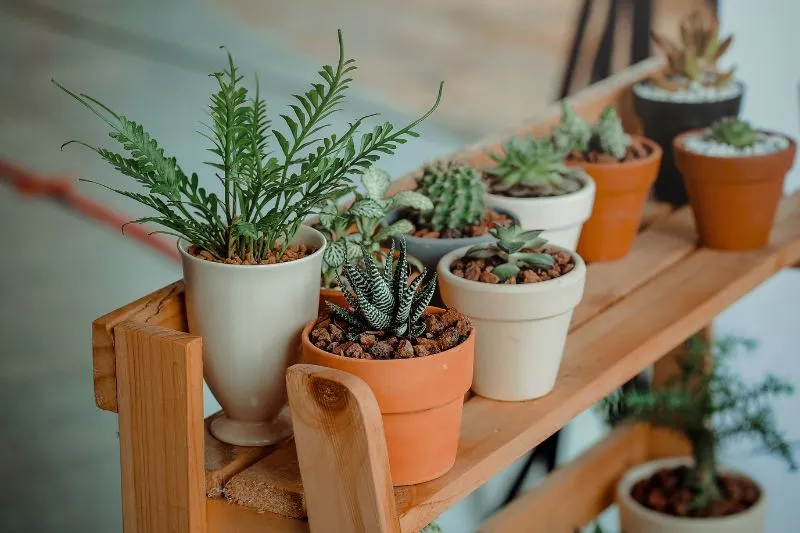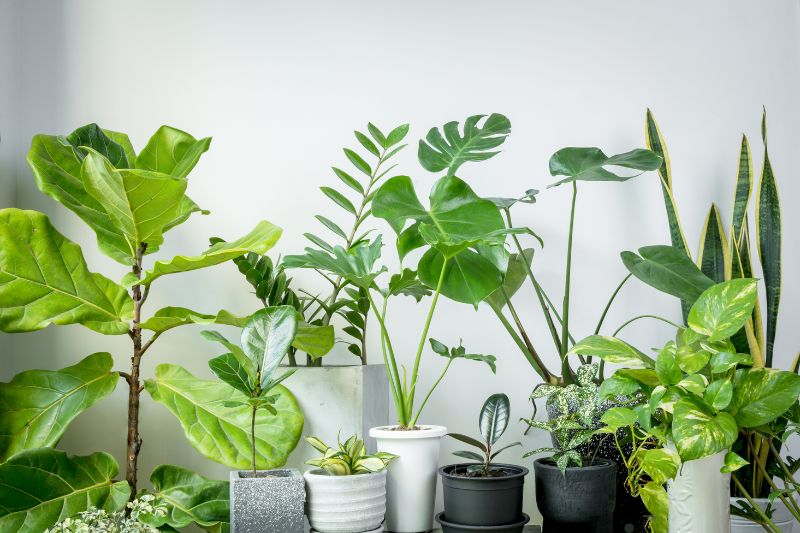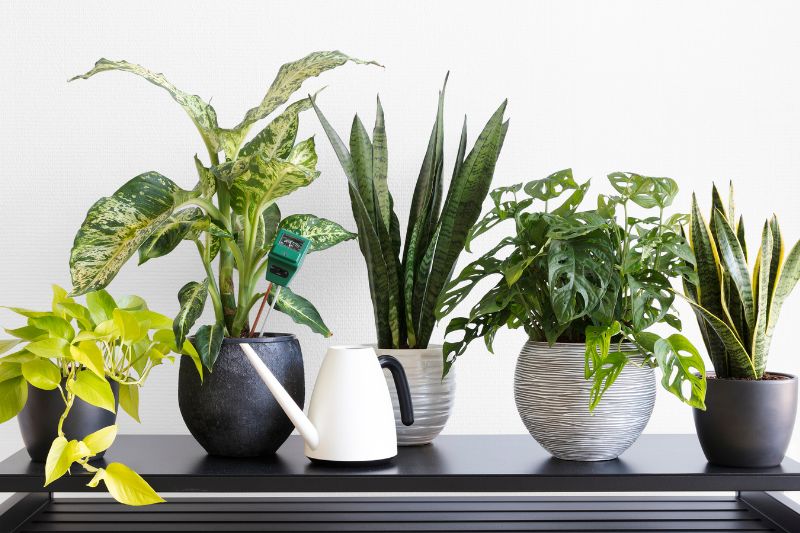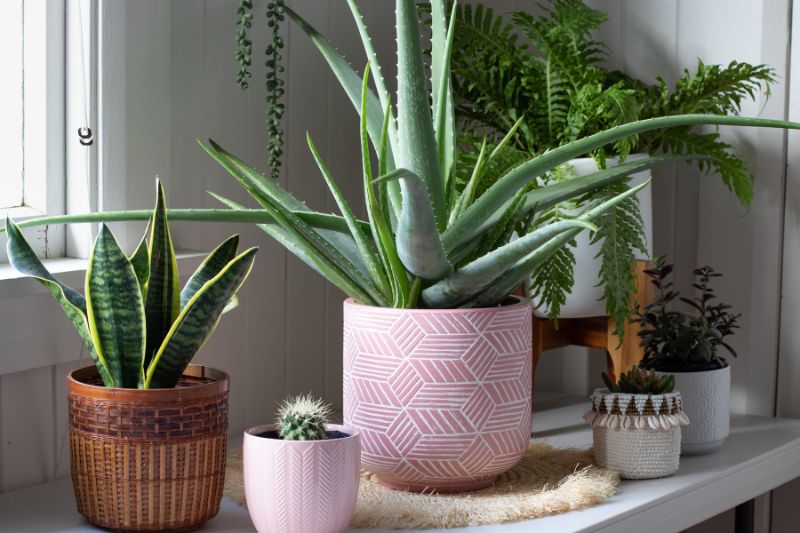
Introduction
Designing a garden can be a transformative experience that enhances your home’s aesthetic appeal and provides a tranquil retreat from daily life. Whether you’re a novice gardener or an experienced horticulturist having a well-planned garden design is crucial to creating a beautiful and functional outdoor space. In this guiden we’ll explore some essential garden tips, discuss the most powerful keyword strategies for SEO and answer common questions about creating your dream garden.

Get 75% OFF Now
1. Garden Design Tips for Beginners
Designing a garden from scratch can be daunting, but by following a few fundamental principles, you can create a beautiful outdoor space that reflects your style and needs.
a. Start with a Plan
Before you start digging, sketch a plan of your garden layout. Consider factors such as:
- Sunlight Exposure: Identify which areas get the most sunlight and which are shaded throughout the day.
- Soil Type: Test your soil to understand its composition and pH level, which will influence plant choices.
- Climate Considerations: Choose plants suited to your local climate to ensure they thrive.
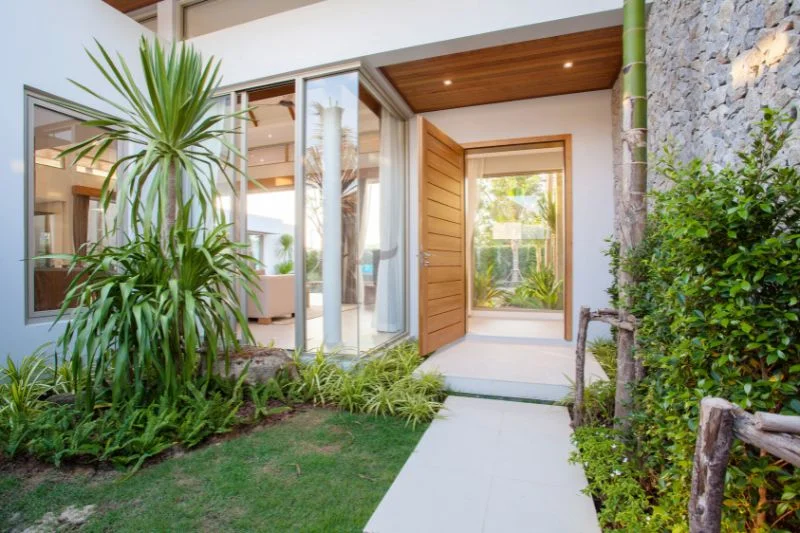
Read more blog: The Best Indoor Plants for Every Room and Skill Level
b. Define Your Garden’s Purpose
Think about how you want to use your garden. Will it be a space for entertaining, a play area for children, or a quiet retreat? This will help you determine the best layout and plant selection.
c. Choose a Style
Selecting a garden style can provide direction for your design. Popular styles include:
- Cottage Garden: Known for its informal design and dense plantings, a cottage garden is filled with flowers and herbs.
- Modern Garden: Focused on sleek lines and minimalistic plantings, often incorporating hardscaping and geometric shapes.
- Zen Garden: A tranquil space with gravel, rocks, and carefully placed plants, designed for meditation and relaxation.
d. Consider Maintenance Requirements
Be honest about the time and effort you’re willing to invest in garden maintenance. Some plants require regular pruning and care, while others are low-maintenance.
e. Incorporate Water Features
Water features like fountains, ponds, or waterfalls add a calming effect to any garden. They can also attract wildlife, enhancing the biodiversity of your space.
2. Creating a Sustainable Garden
In today’s eco-conscious world creating a sustainable garden is both environmentally responsible and rewarding. Here are some tips to make your garden more sustainable:
a. Opt for Native Plants
Native plants are adapted to your local environment, requiring less water and maintenance. They also provide habitat and food for local wildlife.
b. Implement Water Conservation Techniques
- Rainwater Harvesting: Install rain barrels to collect water for irrigation.
- Drip Irrigation Systems: These systems deliver water directly to plant roots, minimizing wastage.
- Mulching: Use organic mulch to retain soil moisture and suppress weeds.
c. Practice Organic Gardening
Avoid chemical fertilizers and pesticides. Instead, use organic compost and natural pest control methods, such as introducing beneficial insects like ladybugs and nematodes.
d. Composting
Composting kitchen scraps and garden waste reduces landfill contributions and enriches soil fertility. Set up a compost bin in your garden and regularly turn the pile to speed up decomposition.
e. Design for Biodiversity
Encourage biodiversity by planting a variety of species. Include flowering plants that attract pollinators like bees and butterflies. Integrate plants that provide shelter and food for birds and other wildlife.
Read more blog: Modern Home Garden Trends: Make Your Outdoor Space Shine
3. Using Color Theory in Garden Design
Color can significantly influence the mood and perception of your garden. Understanding color theory can help you create visually appealing and harmonious garden designs.
a. Understanding the Color Wheel
The color wheel is a tool that shows the relationships between colors. It consists of primary colors (red, blue, yellow), secondary colors (green, orange, purple) and tertiary colors (combinations of primary and secondary colors).
b. Color Schemes for Gardens
- Monochromatic: Focuses on different shades of a single color, creating a cohesive look. For example, a garden filled with various shades of green can feel serene and lush.
- Analogous: Involves colors next to each other on the color wheel, such as blue, blue-green, and green. This scheme is harmonious and pleasing to the eye.
- Complementary: Combines colors opposite each other on the color wheel, such as purple and yellow. This scheme creates contrast and energy.
- Triadic: Uses three evenly spaced colors on the color wheel, like red, yellow, and blue. This bold scheme is vibrant and dynamic.
c. Using Color to Create Visual Effects
- Warm Colors: Red, orange, and yellow can make a space feel warm and inviting. They are ideal for creating focal points in your garden.
- Cool Colors: Blue, green, and purple are calming and can make a space feel larger. Use these colors in shaded areas to enhance tranquility.
- Neutral Colors: Whites, grays, and beiges can balance bold colors and add elegance to your garden.
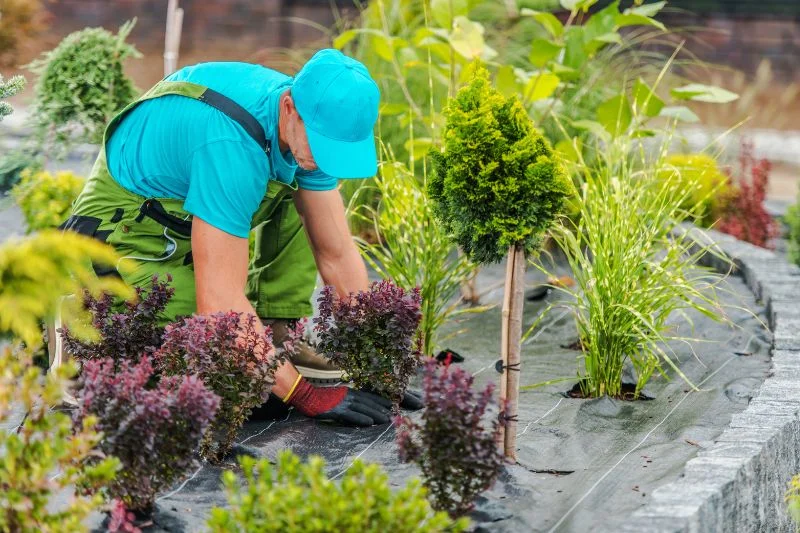

Get 75% OFF Now
4. How to Choose the Right Plants for Your Garden
Selecting the right plants is crucial for a successful garden. Consider these factors when choosing plants:
a. Assess Your Garden’s Conditions
- Sunlight: Determine how much sunlight different areas of your garden receive. Some plants thrive in full sun, while others prefer shade.
- Soil Type: Test your soil to understand its texture, drainage, and pH level. Choose plants that are compatible with your soil conditions.
- Climate: Select plants suited to your region’s climate. Consider temperature ranges, rainfall, and frost dates.
b. Consider Plant Size and Growth Habit
- Mature Size: Consider the mature size of plants to prevent overcrowding. Ensure there’s enough space for growth and airflow.
- Growth Habit: Pay attention to a plant’s growth habit, such as whether it’s spreading, climbing, or upright. This affects how it fits into your design.
c. Balance Perennials and Annuals
- Perennials: These plants return year after year, providing continuity in your garden. Examples include peonies, hostas, and daylilies.
- Annuals: These plants complete their life cycle in one year but offer vibrant colors and variety. Use annuals like marigolds, petunias, and zinnias to add seasonal interest.
d. Consider Bloom Time and Seasonality
Select plants with varying bloom times to ensure year-round interest. Mix early bloomers like tulips with late bloomers like asters for continuous color.
e. Focus on Foliage and Texture
Don’t overlook the importance of foliage and texture in your garden. Incorporate plants with different leaf shapes, sizes, and textures to add depth and interest.
Read more blog: Top Tips for Starting a Garden: Beginner's Guide
5. Maximizing Small Garden Spaces
Even if you have limited outdoor space, you can create a stunning garden. Here are some tips for maximizing small garden spaces:
a. Use Vertical Gardening Techniques
Vertical gardening allows you to make the most of limited space by growing plants upwards. Consider using:
- Trellises: Perfect for climbing plants like roses and clematis.
- Wall Planters: Attach planters to walls or fences to grow herbs and flowers.
- Hanging Baskets: Suspend baskets filled with trailing plants for added dimension.
b. Incorporate Multi-Functional Elements
Choose elements that serve multiple purposes, such as:
- Benches with Storage: Provide seating and storage for gardening tools or cushions.
- Raised Beds with Seating Edges: Offer planting space and seating in one design.
- Fountains that Double as Planters: Integrate water features with planting space for added visual appeal.
c. Choose Compact Plant Varieties
Opt for dwarf or compact plant varieties that fit well in small spaces. Consider:
- Dwarf Trees: Trees like dwarf Japanese maples or columnar apple trees provide structure without overwhelming space.
- Compact Shrubs: Use shrubs like boxwood or dwarf hydrangeas for low-maintenance greenery.
- Container Plants: Grow herbs, vegetables, and flowers in containers for flexibility and portability.
d. Create Illusions of Space
Employ design tricks to make your small garden feel larger:
- Mirrors: Strategically place mirrors to reflect light and create the illusion of more space.
- Diagonal Paths: Lay paths diagonally to draw the eye and create a sense of depth.
- Layering: Use layered planting with taller plants at the back and shorter ones at the front to add dimension.
e. Focus on Simplicity
Keep the design simple and avoid clutter. Choose a limited color palette and focal points to create a cohesive and harmonious space.
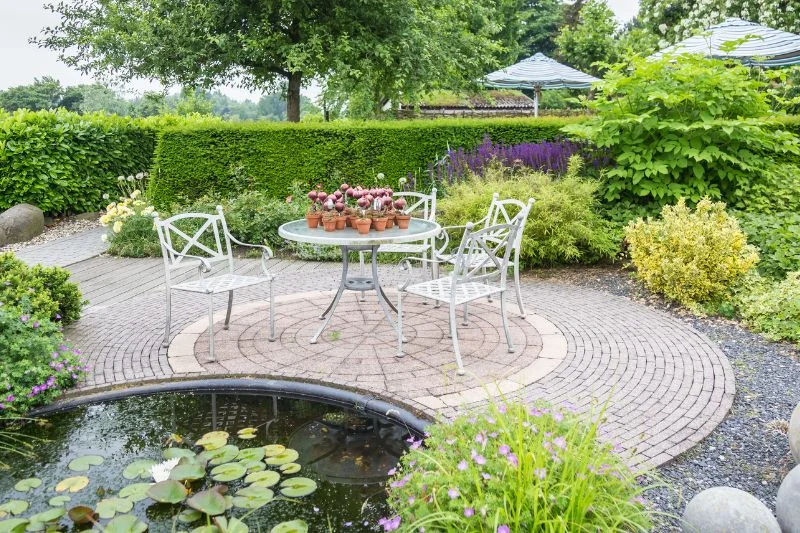

Get 75% OFF Now
FREE Try
6. Garden Design FAQ
Q1: How do I start designing my garden?
A: Start by assessing your garden’s conditions, such as sunlight, soil type, and climate. Sketch a plan that defines your garden’s purpose and style. Choose plants and materials that align with your design goals and maintenance preferences.
Q2: What are the best low-maintenance plants for a garden?
A: Some low-maintenance plants include lavender, succulents, ornamental grasses, and native wildflowers. These plants are hardy and require minimal care.
Q3: How can I make my garden more eco-friendly?
A: To create an eco-friendly garden, focus on sustainable practices such as using native plants, implementing water conservation techniques, and practicing organic gardening. Encourage biodiversity by creating habitats for wildlife.
Q4: What are some tips for designing a small garden?
A: For small gardens, use vertical gardening techniques, incorporate multi-functional elements, choose compact plant varieties, and create illusions of space. Keep the design simple and cohesive to maximize the available area.
Q5: How do I choose the right plants for my garden?
A: Consider factors such as sunlight exposure, soil type, climate, plant size, and growth habit. Balance perennials and annuals for year-round interest, and focus on foliage and texture to add depth to your design.
Q6: What is the best way to use color in garden design?
A: Use color theory to create visually appealing gardens. Consider monochromatic, analogous, complementary, and triadic color schemes. Use warm colors for focal points and cool colors for tranquil areas.
Q7: How do I create a low-water garden design?
A: Opt for drought-tolerant plants, use efficient irrigation systems like drip lines, and apply mulch to retain soil moisture. Incorporate xeriscaping techniques to minimize water usage.
Q8: What are the benefits of raised garden beds?
A: Raised garden beds improve soil drainage, reduce weed growth, and provide better control over soil quality. They are also easier on the back and knees, making gardening more accessible.
Q9: How can I attract pollinators to my garden?
A: Plant a variety of flowering plants that bloom at different times, providing a continuous food source for pollinators. Avoid pesticides and include native plants to attract bees, butterflies, and hummingbirds.
Q10: What are some common mistakes to avoid in garden design?
A: Avoid overcrowding plants, neglecting maintenance, choosing incompatible plants, and ignoring the garden’s purpose. Plan carefully, consider future growth, and prioritize functionality in your design.
Q11: How can I incorporate edible plants into my garden design?
A: Integrate edible plants like herbs, vegetables, and fruit trees into your garden beds and borders. Use attractive edibles like ornamental kale or rainbow chard for both beauty and functionality.
Read more blog: Garlic Plant Tips: Tips for Planting Garlic
Conclusion
Designing a garden is a creative and rewarding endeavor that allows you to express your style and connect with nature. By following these garden design tips and integrating sustainable practices, you can create a beautiful and functional outdoor space that brings joy for years to come.
Whether you’re designing a small urban garden or a sprawling backyard oasis, the key is to plan thoughtfully and choose elements that reflect your vision and lifestyle. Embrace the journey of garden design and enjoy the endless possibilities it offers.

